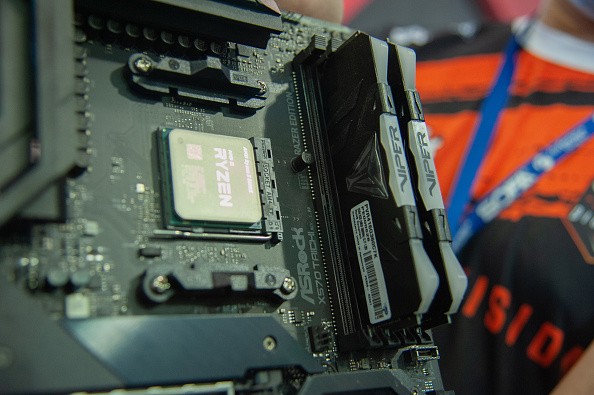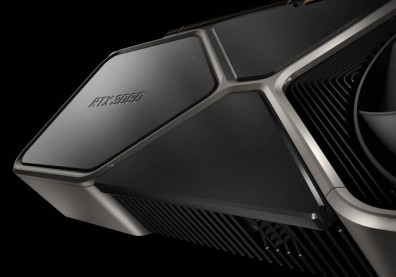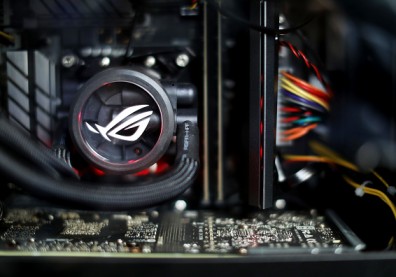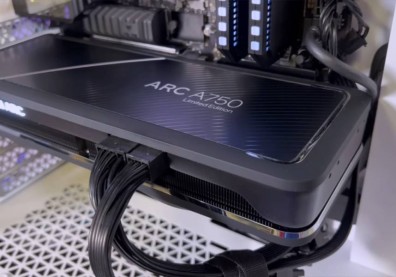AMD's CPU naming scheme is next to be demystified in our series of guides aimed to help beginners make better choices for their future gaming PC builds. Last time, we explored Intel's side, and now it's time to go for Team Red.

A AMD Ryzen procesor seen in a Motherboard during the last day of the SOFA (Salon del Ocio y la Fantasia) 2021, a fair aimed to the geek audience in Colombia that mixes Cosplay, gaming, superhero and movie fans from across Colombia, in Bogota, Colombia on October 18, 2021.
For this guide, we're going over modern AMD CPUs launched from 2011 onwards. This is because these chips remain quite viable even for today's gaming generation. As such, you won't expect anything as old as Semprons or Athlons as they're too old to be used in any gaming rig these days.
Without further ado, let's begin.
AMD Ryzen Names
We're going to start with Team Red's newest lineup of CPUs: Ryzen. First launched back in 2017, AMD's Ryzen series is the modern competitor to Intel's long-running Core i-series, and has been dominant for the past five years (until the release of Team Blue's 12th gen Alder Lake chips, that is).
There are four main tiers under the Ryzen line: Ryzen 3, 5, 7, and 9, according to TechConsumerGuide. However, another one is called Threadripper, which is the highest-end tier (and the most expensive). Threadripper chips are not designed for gaming but for workstations that require immense hardware power. We're not going to talk about Threadripper here.
Here's what you should know about Ryzen 3, 5, 7, and 9 processors, as per Newegg:
- Ryzen 3 refers to budget-friendly, entry-level CPUs that still offer considerable gaming performance.
- Ryzen 5 is the mid-range, which offers the best price-to-performance balance.
- Ryzen 7 is high-end and is intended for folks who want smooth gaming experiences alongside great workstation performance.
- Ryzen 9 is enthusiast-grade, meant for people whose budgets are unlimited and look for no compromises when it comes to CPU power.
Read also: Intel CPU Names Explained: What Is i5, i7, Xeon, ETC...
CPU Naming Scheme Example
According to YouTube channel Memory Express, they explain what the specific name of an AMD Ryzen CPU means. They took the Ryzen 3 2200G as an example. So, here's what all those numbers and letters stand for.
-
Ryzen 3 refers to the processor's tier or Segment, as AMD calls it. You already know about what Ryzen 3 is intended for: budget builders who don't want to sacrifice performance.
-
The number "2" at the start of 2200G refers to the generation the processor is from. A 2 means that the 2200G comes from the second generation of Ryzen processors. So far, there have been five generations of mainstream Ryzen desktop chips.
-
The "200" refers to the CPU's performance level. In this case, the 2200G is of a weaker tier. Higher-end CPUs will have the numbers 300, 400, 500, 600, 700, and 800 following their generation numbers.
-
The "G" refers to the card's integrated graphics chip. This means that you can use your PC even without a discrete graphics card. Anything without a G means it doesn't have built-in graphics, so you'll need a dedicated graphics card to get a display out.
AMD Ryzen Suffix Letters
AMD, much like Intel, uses suffix letters to indicate what kind of processors they're offering. You already know about the "G" suffix, so it's time to learn a few more. DrTechTips shares the meanings for the remaining suffixes as follows:
- H refers to CPUs found in high-performance gaming laptops.
- HS refers to laptop CPUs weaker than their H-labeled counterparts. They're also more power-efficient.
- HX series CPUs offer higher performance than standard H-series chips.
- U series refer to ultra power-efficient chips meant for super-thin laptops, designs for extended battery life and easier cooling (power-efficient CPUs run cooler).
- E and GE are suffixes similar to the "G" suffix indicating the presence of an integrated GPU. But compared to G-series CPUs, they feature weaker graphical (and gaming) performance.
- X refers to high-performance processors which feature AMD's Extended Frequency Range (XFR). This means that the chips will automatically boost to higher clock speeds than normal in specific conditions without manual overclocking.
FX Series
Before the Ryzen series, there was the FX. These processors were Team Red's high-end CPU line that aimed to compete with Intel's Core i-series, even if it failed miserably. Still, they're worth mentioning because some FX series chips remain viable for ultra-cheap gaming PC builds.
But unlike Ryzen, FX naming schemes indicate different things about the CPUs, as per PCBuyerBeware.
- The first number after the FX designation refers to how many cores the CPU has. AMD named their chips as follows: FX 8XXX (8 cores), FX 6XXX (6 cores), and FX 4XXX (4 cores). As such, a CPU like the FX 8350 means it has 8 CPU cores (a controversial claim back in the day, but a topic for another time).
- The second number in the name refers to the generation a chip is from. Take the FX 8320, which has a number 3 following the 8. This means it is from the third generation.
- The last two numbers indicate the performance level of the chip. Take two chips, for example, the FX 8350 and the FX 8320. The former is the faster one because it has a 50 in it than the other, which has a 20.
That's how the naming scheme works for AMD processors from the FX and Ryzen series. Now, you have a chance to make better buying decisions for your next AMD-based gaming PC!
Related: AMD FSR 2.0 Might Be Too Much For The GTX 1060 And Other Older Cards
Story posted on GameNGuide
Written by RJ Pierce









